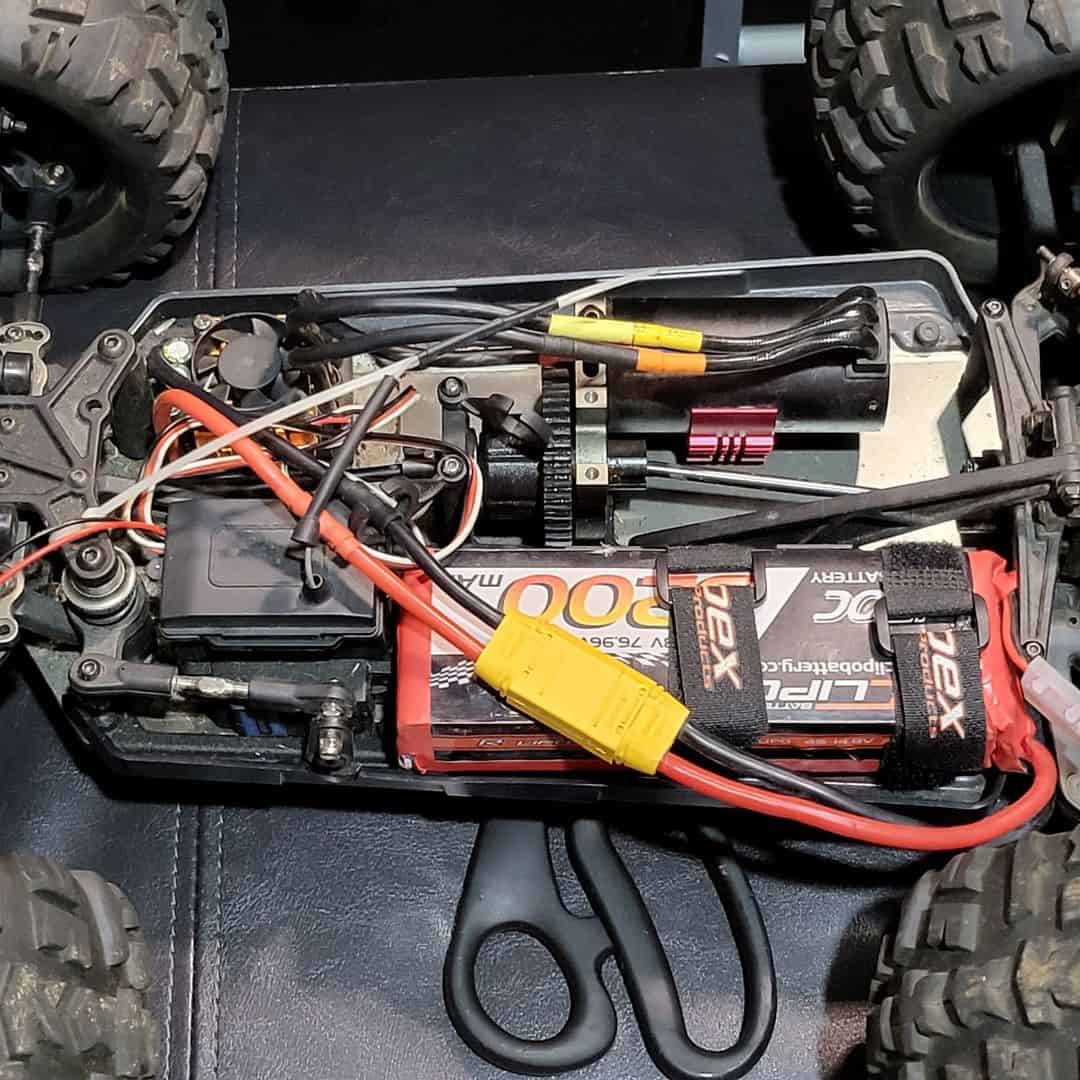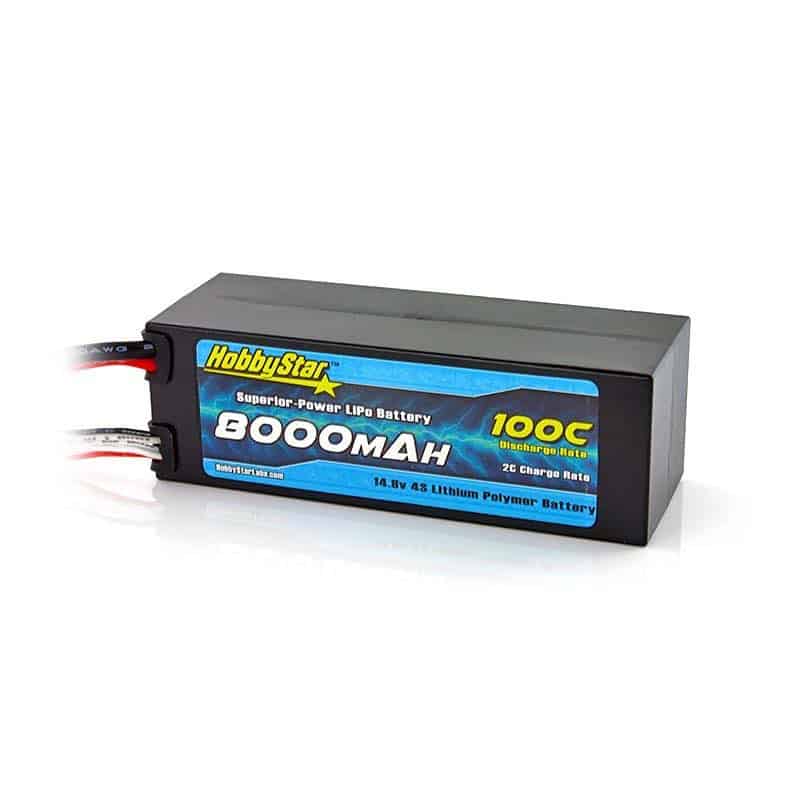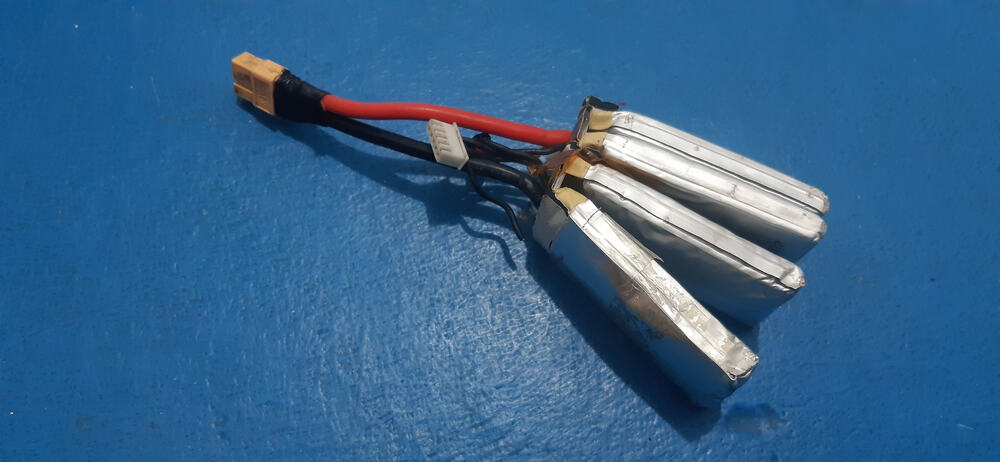Lithium-polymer batteries are preferred for powering electronic devices such as drones, RC cars, laptops, and other hobby products. As expected, there is a proper way to charge them to maximize the battery’s life.
This article will discuss the basics of charging a 4S LiPo battery and provide a step-by-step guide for doing so safely and effectively.
Table of Contents
Basics of Charging LiPo Battery
Before getting into the specifics of charging a 4S LiPo battery, one must understand the fundamentals.
- LiPo batteries are composed of several individual cells, each with a voltage of 3.7 Volts.
- A 4S LiPo battery comprises four cells in series (hence the 4S designation), resulting in a total voltage of 14.8V.
- Make sure your charger is capable of charging 4S LiPo batteries. It’s also essential to match the balance connector type and charge rates with those specified by the battery manufacturer.
- LiPo batteries have an integrated circuit board (ICB) that protects the battery during charging and discharging processes and displays critical information about the battery’s status.
What To Consider When Charging A 4S LiPo Battery?
1. Appropriate Charger
The first step in charging a 4S LiPo battery is to select an appropriate charger and power supply. When selecting a charger, consider several factors, such as the type of battery you’re using (NiMH, Li-Ion, or LiPo), the number of cells in the battery (3S, 4S, etc.), and the voltage and current requirements of the charger.
On another note, ensure that the charger you purchase has built-in balancing capabilities.
- Type of Battery
Ensure the charger is compatible with your battery type (NiMH, NiCd, Li-Ion, or LiPo). The type of charger you’ll need will depend on the size and specifications of your 4S LiPo battery and the type of usage (AC/DC) it will be put through.
- Number Of Cells
Ensure the charger can handle the number of lipo cells when charging the LiPo battery.
- Voltage and Current Requirements
Check your charger’s voltage and current requirements to ensure it can handle the demands of charging your 4S LiPo battery. LiPo 4S batteries may offer discharge currents of up to or even more than 100C, yet for optimal results, charging currents should not exceed 0.5-1.0C.
Most 4S LiPo batteries require a charger capable of delivering a maximum of 6A. However, some applications may need more depending on the size and capacity of the battery, rating milliamp hours (mAh).
For most hobbyists, an all-in-one charger with adjustable charge rates is a great choice, as it will allow you to easily adjust the charge cycle based on your battery’s specifications.
2. Manufacturer’s Instructions
Once you’ve selected an appropriate charger for your 4S LiPo battery, you must read the manufacturer’s instructions before starting the charging process.
The instructions will provide important information about how to safely handle your battery and charger and how to set the voltage and current.
3. Setting Up Your Lipo Charger

Once you’ve selected the appropriate charger, it’s time to set it up for charging your 4S LiPo battery. Before you start charging, adjust the voltage and current settings on your charger according to the manufacturer’s instructions. This will ensure that your battery is charged safely and efficiently.
- You should set the maximum charging voltage to 4.2 Volts and the current to 1C for a standard charge and 4.35V and 2C for a fast charge.
- Ensure that the charger is plugged into an appropriate power source.
- Attach the balance lead (typically a 6-pin connector) to the battery’s ICB. This will allow the charger to detect the individual voltages of each cell and set it up accordingly for charging.
- Once attached, select your desired charge rate on the charger. Generally, it’s best to start with a lower setting (1-2 Amps) and gradually increase if necessary.
- Finally, press the “Start” button to begin charging the battery.
4. Monitoring the Charging Process
As the battery is charging, monitoring the process is essential to ensure it is charging safely and efficiently. Most all-in-one chargers will display the status of the voltage of each cell in the battery and other information about the charging process.
Before anything else, always pay attention to charging batteries. Whenever a lipo is in the process of being charged, fire hazards increase exponentially.
An undamaged and properly-charged lipo battery might not ignite immediately, but FPV drones are known to cause harm to batteries by crashing or overcharging them; therefore, it can be risky when chargers attempt to re-energize these deteriorated cells.
Pay close attention to this information and ensure that the cells in the battery charge at roughly the same rate. If there is a significant difference in the voltages of the individual cells, it’s best to stop charging and investigate further. If everything looks good, you can continue charging until the battery has reached its maximum capacity.
5. After the Charging Process
Once charging is complete, disconnect the charger from the battery and remove it from its power source.
Store your LiPo batteries in a cool and dry place. Additionally, check on them periodically and ensure they are not over-discharged or damaged.
Parallel vs. Series Charging

When charging a 4S LiPo battery, consider whether you will use parallel or series charging.
Parallel charging, which involves connecting multiple batteries and charging them simultaneously, can provide faster charge times compared to series charging. However, there are some risks associated with this type of charging method.
In particular, if one of the batteries in a parallel pack becomes overcharged, it can cause significant damage to the other cells. For this reason, it is essential to carefully monitor each battery’s voltage while charging and ensure they all charge at roughly the same rate.
On the other hand, Series charging involves connecting multiple batteries in series and charging them sequentially. This method can be slower and more complicated to set up, but it is usually safer and more reliable than parallel charging.
How to Dispose of Lipo Battery?
Lithium-ion batteries, such as LiPo batteries for 4s applications, offer robust and reliable power sources. But when it comes time to dispose of them, proper handling is critical.
Before discarding any 4S LiPo battery, it’s essential to understand the risks associated with improper disposal and take the necessary steps to ensure the battery is disposed of properly.
Risks of Improper Disposal
- LiPo batteries contain combustible chemicals, which can be hazardous if exposed to extreme temperatures or physical damage.
- Improper disposal of lithium-ion batteries can cause environmental contamination, as the chemicals can leak into soil and waterways.
- If a LiPo battery is not stored properly, it may overheat and catch fire
- Improper handling of lithium-ion batteries can lead to electric shock or burns
Practices of Proper Disposal
- Use a smart charger to discharge the battery before discarding it
- Store the discharged LiPo battery in an insulated bag or container until it is ready to be disposed of
- Do not incinerate the LiPo battery, as this can release hazardous chemicals into the atmosphere
- Dispose of the LiPo battery at a local recycling facility that is certified to recycle lithium-ion batteries
- Never leave a used LiPo battery in direct sunlight or exposed areas where it may be damaged or become overheated
By following these simple steps, you can ensure that your 4S LiPo battery is disposed of safely and responsibly.
As a responsible user of lithium-ion batteries, you ought to dispose of them when they are no longer appropriately needed. Doing so will help protect the environment and keep yourself, your family, and your property safe from potential hazards associated with improper disposal.
FAQ

1. Can You Charge a LiPo battery with a USB?
A port is possible, but it is not recommended due to safety hazards. It requires an appropriate voltage regulator circuit and careful monitoring to prevent damage to the battery and any connected device. The safest way to charge a LiPo battery is by using a dedicated lithium-ion charger to ensure a safe and efficient charging process.
If you attempt to charge a LiPo battery with a USB port, ensure the battery is not damaged or undercharged before attempting to do so. Additionally, keep an eye on the temperature of the battery and any connected device while charging – and disconnect immediately if either reaches unsafe levels.
USB charging of a LiPo battery can be convenient but take all the necessary precautions first for a safe and successful process.
2. How 4s Lipo Battery will Provide More Reliable Years?
A 4S LiPo battery pack can provide a reliable power source for many years to come and is properly maintained. With the right charger and settings, you can ensure your battery is always charging safely and effectively.
In addition, by monitoring the process closely and storing the battery in a cool, dry place when not in use, you can help extend its lifespan. You can count on your 4S LiPo battery with proper care and maintenance to provide reliable power for years.
3. What is the C-Rating of a 4s LiPo Battery?
The C-Rating, also known as the “Discharge Rating,” measures how quickly energy can be drawn from the battery and indicates the maximum current that can be safely discharged without damaging it. The C-Rating of a 4S LiPo battery is another critical factor to consider when evaluating its power potential.
Higher C-Ratings indicate greater maximum current draw, while lower C-Ratings indicate less. Choosing a 4S LiPo battery with the right C-Rating for your application is crucial as it ensures the safe continuous discharge of the battery.
Invariably, you need to understand the discharge cycles of your 4S LiPo battery. Generally, a process consists of one full charge and one full discharge. The number of cycles your battery can handle before it needs to be replaced will depend on how you take care of it.
If you consistently overcharge or discharge your battery, it will need to be replaced sooner than if you follow the manufacturer’s instructions and charge it properly.
Final Thoughts
4S LiPo batteries offer superior power in a lightweight and compact form. Charging, C-rating, discharge cycles, and disposal are all important factors when selecting a 4S LiPo battery for your application. When cared for properly, a 4S LiPo battery can provide reliable power for years.
Charging your 4S LiPo battery with a smart charger, following the manufacturer’s instructions, and properly disposing of it when necessary are all crucial steps to ensure that your LiPo battery is used safely and responsibly.
